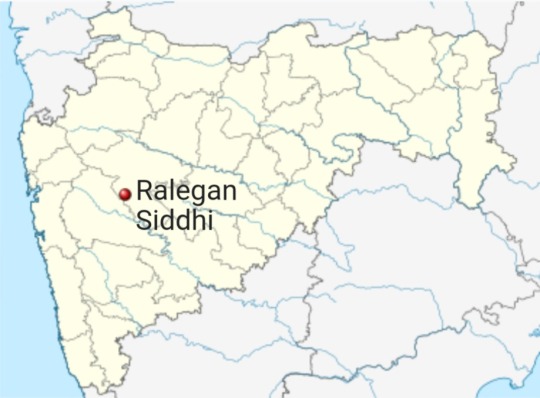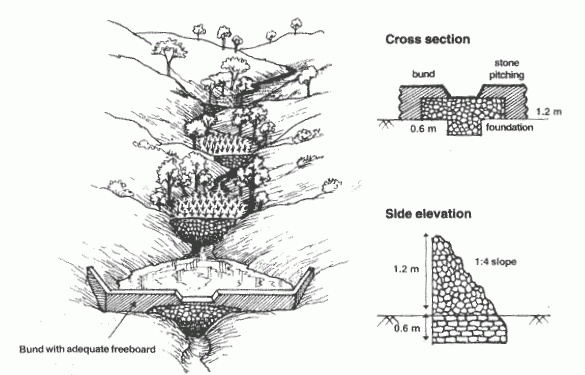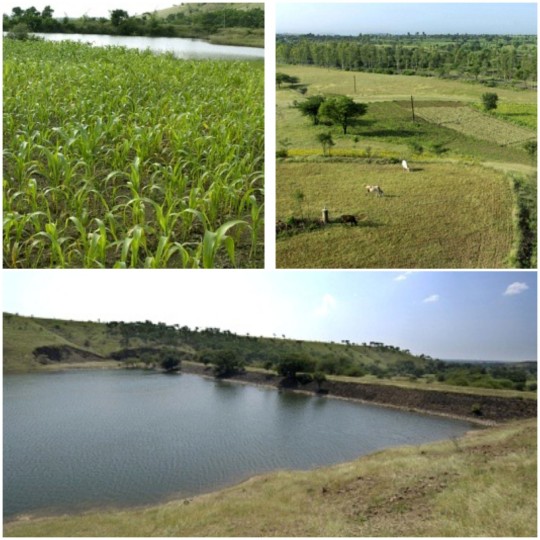#nasbandi
Text
Elderly Care in Noida-Neha Nursing services

Elderly Care in Noida-Neha Nursing services
India, with its rich traditions and close family ties, is currently undergoing major demographic changes characterized by an aging population. Discover the complexities and realities that shape elderly care in this dynamic country.
Aging scenario:
Currently, over 104 million elderly people live in India and this number is estimated to reach 173 million by 2026. This change is being driven by increasing life expectancy and decreasing birth rates.
Government initiatives:
Recognizing this changing situation, the Indian government has introduced initiatives such as the National Program for Elderly Care (NPHCE) to address the unique healthcare needs of the elderly. The rise of professional nursing services:
While family support remains important, India has seen a significant increase in demand for specialized elderly care services. Home medical care, lifestyle support, and geriatric care management are becoming increasingly important.
Family-centered approach:
When it comes to geriatric care, India has traditionally relied on a family-centered model. More than 75% of older adults prefer to live with their families, highlighting the cultural importance of intergenerational living.
Cultural considerations:
The role of cultural nuances in elderly care cannot be overstated. Understanding and respecting the preferences and traditions of older adults is an essential part of comprehensive care.
Focus on mental health:
There is growing concern about the mental health of older people experiencing loneliness and isolation, highlighting the need to integrate mental health support into aged care services.
Urbanization hurdles:
Rapid urbanization has led to an increase in nuclear families and increased migration of workers. This change highlights the need for formal elder care services, especially when families are geographically separated.
Impact of technology:
Technological advances such as telemedicine, wearable devices, and smart home technology have greatly contributed to improving the quality of life for older adults. Health challenges:
The prevalence of age-related health problems such as diabetes, cardiovascular disease, and arthritis is a major challenge, and access to quality healthcare is essential to effectively manage these diseases.
Economic dynamics:
Caring for the elderly is not just a social issue. It's an important economic consideration. Changes in the dependent ratio due to an increase in the proportion of elderly people will also affect the pension system and social security.
Challenges of economic dependence:
According to this study, 43% of older women are completely dependent on others financially, and the proportion of older women is even higher at 67%. Additionally, 18% live alone or with a spouse, approximately 45% are unaware of available government resources, and one in two suffers from loneliness.
Social determinants of health:
Ensuring the well-being of older adults requires addressing the social determinants of health. A report by UNFPA and HelpAge International identifies key areas of concern.
Income security through access to employment opportunities to supplement pensions.
Health in old age, including medical care, medications, equipment, and education within financial constraints. A nurturing and supportive environment that empowers them in a safe and accessible community. Join and contribute to a community that provides meaning and affirmation.
In addition to these challenges, India is also suffering from inflation, which reached a record high of 7.79% in April 2022. According to Reuters, around 15 million retirees are at risk of homelessness as few have access to adequate health care due to poor state pensions. This fact is emphasized. India's silver economic spending is expected to grow from $100 billion to $1 trillion by 2030. Governments, insurance companies, healthcare providers, and organizations are proactively preparing for this change and supporting the growing aging population. Service leadership is essential.
In conclusion, addressing the complex landscape of elderly care in India requires a nuanced and comprehensive approach. By balancing tradition with modern solutions, understanding the diverse needs of older people, and fostering collaboration between families, formal care services and innovative start-ups are shaping the future of aged care in this country. It's shaping. It is being formed.
#male & female nursing staff for home in signature bridge#male & female nursing staff for home in bhopura#nurse bureau in nyay khand III indrapuram ghaziabad#nurse bureau in nyay khand II indrapuram ghaziabad#nurse bureau in neelmani colony ghaziabad#nurse bureau in naya ganj ghaziabad#nurse bureau in nasbandi colony ghaziabad#nurse bureau in nai basti ghaziabad#nurse bureau in muradnager ghaziabad#nurse bureau in mohan nager ghaziabad#nurse bureau in estate ghaziabad
0 notes
Note
aapko bade hoke kitne bacche chahiye ?
Omw to nasbandi
4 notes
·
View notes
Text
इमरजेंसी के हालात दिखा चुकी हैं बॉलीवुड की ये फिल्में https://www.abplive.com/web-stories/bollywood/nasbandi-badshao-hazaaron-khwaishein-aisi-these-films-showed-the-era-of-emergency-before-kangana-ranaut-movie-2770762
0 notes
Text
Post # 140
Ralegaon Siddhi : a rags-to-riches story!

Ahmednagar, a district in central Maharashtra, contains a village housing a little under 2500 people. The village's name is Ralegaon Siddhi, also spelt as Ralegan Siddhi.
Before 1975, Ralegan Siddhi was one of the many villages of India plagued by acute poverty, over-population, drought, inadequate conservation of rain water due to soil erosion and run-off, low crop yields, low income, deprivation, neglect and hopelessness. Villagers needed to go the neighbouring village to get drinking water. Imagine that!
By 2000, 25% of its residents, i.e. about 1000 people earned over INR 5 lacs per year. Ralegan residents reportedly had private savings of INR 3 crores. Not a single villager depended on government drought relief measures. The village became so prosperous that a major bank opened its branch there. By Indian standards, Ralegan Siddhi had become a rich village.
A World Bank report endorsed that the village of Ralegaon Siddhi had transformed itself from a highly degraded village ecosystem, in a semi-arid region of extreme poverty, to one of the richest in the country. Today, this little village in West India, has become a case study of sustainable development for the entire world!
But how did this miracle happen? Therein lies a tale!
It all began, when a 38 year old, ex-army serviceman, returned to his ancestral village, Ralegaon Siddhi, in 1975, having taken voluntary retirement from the armed forces. His name is Kisan Baburao Hazare. You probably know him as Anna Hazare!
And, if the story of Anna Hazare and Ralegaon Siddhi doesn't convince you that one man can make a difference, nothing ever will.

Anna Hazare grew up in Mumbai, because his village didn't have a school. He dropped out after 7th grade, because he couldn't afford to continue. He then started selling flowers in the Dadar. In time, he owned two flower shops.
When he was 23, he joined the Indian army as a truck driver. In 1965, he was posted on the Punjab border during the Indo-Pak war. The experiences of wartime, coupled with his acute poverty affected him so much that he considered suicide at one point.
One day, while driving the truck, an enemy bomb/missile struck them and Anna Hazare was the sole survivor. This experience made him ponder the meaning of life and death. He felt that God wanted him to stay alive for some reason. He decided to dedicate his life to service of mankind.
In 1975, after 15 years in the armed forces, he took voluntary retirement and went back to Ralegoan Siddhi.

Anna Hazare returned to find Ralegoan Siddhi in a sorry state of affairs. Although most of the villagers owned some land, cultivation was extremely difficult due to the rocky ground, preventing retention of the monsoon rains. This situation was worsened by deforestation, soil-erosion and droughts. Crop yield and productivity was low, hence incomes were low and poverty was high.
One person from the village resorted to illicit liquor vending, as this seemed lucrative. His success attracted many others. Soon, the economy of the village had become reliant on the illegal manufacture and sale of alcohol, a product on which many of the villagers had become dependent. Many inhabitants borrowed from moneylenders to survive, paying monthly interest rates of as much as 10%. Crime and violence (including domestic violence) had become commonplace.
Education, health and hygiene were poor. There was only one school, upto 4th grade. Caste system and untouchability were rampant. Net-net, the scene was bad.

Anna Hazare had savings of INR 22000 from his provident fund and gratuity. The first task he undertook was to use INR 3000 of his funds to rebuild the decrepit Yadavbaba Temple, which was in a decrepit state. Seeing this selfless act, the village elderly felt inspired to support him and donated small amounts of money and generous amounts of free labour to construct the temple. Thus was born the concept of Shramdaan, or donating labour. Affection and respect for Anna increased.

Some youth also became involved in the work and so Anna organised a Youth Association called Tarun Mandal.
Anna and Tarun Mandal then decided to take up the issue of alcoholism to drive a process of reform. At a meeting conducted in the temple, the villagers resolved to close down liquor dens and ban alcohol in the village. Since these resolutions were made in the temple, they became, in a sense, religious commitments. Over thirty liquor brewing units voluntarily closed their establishments. Those who did not succumb to social pressure were forced to close their businesses when the youth group smashed their premises. The owners could not complain as their businesses were illegal. Once three drunken villagers were tied to pillars and then flogged, personally by Anna Hazare, with his own army belt. Sale of tobacco, cigarettes and beedies were also banned. The youth group brought all the tobacco, cigarettes, and beedies from the shops in the village and burnt them in a Holi fire. Tobacco, cigarettes, or beedies are no longer sold in Ralegaon Siddhi.
In 1980, Anna Hazare started a Grain Bank at the temple. Farmers with surplus grain production would donate a quintal to the bank. In times of need, others could borrow the grain, but they had to return the amount of grain they borrowed, plus an additional quintal as an interest. This ensured that nobody in the village ever went hungry or had to borrow money to buy grain. This also prevented distress sales of grain at lower prices at harvest time.
Probably the highlight of Anna Hazare's work is the Watershed Development Programme, which has been studied and copied extensively.
Ralegan Siddhi is located in the foothills, so Anna persuaded villagers to construct watershed embankments to stop water and allow it to percolate into the ground. This increased the ground water level and improved irrigation in the area.
When Anna Hazare came to Ralegan Siddhi in 1975 only 70 acres of land was irrigated. Today, about 2,500 acres are irrigated.

Cultivation of water-intensive crops like sugarcane was banned. Crops such as pulses, oilseeds, and certain cash crops with low water requirements replaced them. This improved yield and income.
Under Anna Hazare's moral leadership, villagers gradually decided to shun untouchability and caste discrimination. The Dalits have become integrated into the social and economic life of the village. There are examples of upper caste villagers building houses for the lower caste Dalits as a part of Shramdaan.
Today, there is a drinking water tap every 100 meters in the village.
Look at how beautiful a transformed, prosperous village looks!

Here is a comprehensive list of all initiatives taken by Anna Hazare in Ralegaon Siddhi since he first arrived in 1975.

The Ralegan model owes its success to the strong value system that Anna was able to establish based on principles of sharing, compassion and equity. This value system is epitomised through the four bandis (bans) with which the villagers agreed to comply, namely – Nashabandi (ban on addiction), Nasbandi (sterilisation for population control), Kurhadbandi (ban on felling trees or deforestation) and Charaibandi (ban on grazing of cattle on green fields) and, additionally, Shramdaan.
The Government of India recognized his work by conferring the Padma Shri in 1990 and Padma Bhushan in 1992.
From 2000 onwards, Anna Hazare took his social activism to the national stage, with his movements against corruption and other forms of poor governance.
But this post remains a tribute to the grassroots - Kisan Baburao Hazare and the villagers of Ralegaon Siddhi, who took ownership of their situation and transformed themselves into a rags-to-riches story.
#anna hazare#Ralegaon Siddhi#ralegan siddhi#ahmednagar#maharashtra#kisan Baburao Hazare#indo pak war#Watershed development program#watershed#grain bank#nashabandi#nasbandi#Shramdaan#padma shri#padma bhushan
6 notes
·
View notes
Photo

On this day 44 years back, on 25th June, 1975, then Prime Minister Indira Gandhi declared a state of National Emergency. A dark phase of our country and it's a democracy. These following films deal with the theme. Courtesy- Charudutt Acharya.
#emergency 1975#emergency#indira gandhi#bollywood#bollywoodirect#bollywood news#aandhi#piravi#kissa kursee kaa#hazaaron khwaishein aisi#nasbandi#Heerak Rajar Deshe
6 notes
·
View notes
Text
نسبندی کرانے والے کے پیچھے نماز پڑھنا جائز ہے یا ناجائز؟
نسبندی کرانے والے کے پیچھے نماز پڑھنا جائز ہے یا ناجائز؟
نسبندی کرانے والے کے پیچھے نماز پڑھنا جائز ہے یا ناجائز؟
سوال : زید نے بلا جبر و اکراہ راضی برضا نسبندی کرا لیا اب از روئے شرع اس کے پیچھے نماز پڑھنا جائز ہے یا ناجائز؟ ایک نام نہاد مولوی نے کہا کہ اگر زید نے اس گناہ سے نادم ہو کر علی الاعلان مجلس میں اللہ سے توبہ و استغفار کر لیا تو اب زید کے پیچھے نماز درست اور جائز ہے تو کیا مولوی مذکور کا یہ کہنا صحیح ہے؟ مفصل جواب سے نوازیں. کچھ پیر اور…
View On WordPress
#Nasbandi karane wale ke peeche namaz padhna#بغیر کسی دباؤ کے نسبندی کرانے والے کے پیچھے نماز جائز ہے یا نہیں#نسبندی کرانا کیسا ہے#نسبندی کرانے والے کے پیچھے نماز پڑھنا جائز ہے یا ناجائز؟#نسبندی کروانا اسلام میں کیسا ہے#نسبندی کروانے کا گناہ کیا ہے
0 notes
Photo

अविवाहित मंदबुद्धि युवक को पैसों का लालच देकर करा दी नसबंदी, घरवालों में मचा हड़कंप उत्तर प्रदेश के फिरोजाबाद में एक हैरान करने वाला मामला सामने आया है। यहां एक एएनएम ने पैसों का लालच देकर एक अविवाहित मंदबुद्धि युवक की नसबंदी करा दी। युवक रिक्शा चलाता है। जब युवक घर पहुंचा तो उसकी हालत देखकर परिजनों के होश उड़ गए।
#CHC Tundla#Firozabad Uttar Pradesh#Health department#nasbandi agra#rickshaw puller#Sterilization unmarried youth#उत्तर प्रदेश नसबंदी योजना#स्वास्थ्य विभाग की लापरवाही
0 notes
Text
The Best Patient care services in Gurgaon-Neha Nursing services
Neha Nursing-The Best Patient care services in Gurgaon,And Nursing Care At Home In Gaur City, services like patient care services noida-india , Home Nursing Services in Indirapuram etc, More Information Visit Us- at www.nehanursesbureau.in
#nurse bureau in neelmani colony ghaziabad#nurse bureau in naya ganj ghaziabad#nurse bureau in nasbandi colony ghaziabad#nurse bureau in nai basti ghaziabad#nurse bureau in muradnager ghaziabad#nurse bureau in mohan nager ghaziabad#nurse bureau in estate ghaziabad#home nursing services in Noida#male and female attendant in noida#patient care service in noida#home nursing service in noida#Home Nursing Services in Indirapuram#nursing bureau in noida#TRAINED ATTENDANTS FOR HOME PATIENT CARE IN NOIDA#patient care services noida - india#Nursing Care At Home In Gaur City#Patient care services in Gurgaon
0 notes
Text
18 Ways To Sterilize Anti-Social Seeds (Brahminism)
18 Ways To Sterilize Anti-Social Seeds (Brahminism)
(Translation of Marathi article published in ‘Samrat’ Bahujan daily from Mumbai, dated: 27/08/04 under the caption ‘Samajik Vishamtechya Bijanchi Nasbandi, authored by Deepak Salve, translated into English by C.C.Hadke)
It is essential to sterilize anti-social seeds. Except for Brahmins, the people from Bahujan communities need have to follow some conditions. These conditions are very hard to…
View On WordPress
1 note
·
View note
Text
Vasectomy Treatment In Lahore - Vas Deferens Vasectomy - Nasbandi In Lahore
Vasectomy Treatment In Lahore – Vas Deferens Vasectomy – Nasbandi In Lahore
Vasectomy Treatment In Lahore – Vas Deferens Vasectomy – Nasbandi In Lahore Vasectomy is an operation of a man, so that their partner can’t get pregnant. The process, which you can complete in our Chinese hospital without being asleep, eliminate sperm from being able to leave the testes. When no sperm in flowing the woman, she won’t get pregnant. Our vasectomy specialist may regard as male…
View On WordPress
#how to get vasectomy#nasbandi#nasbandi ka ilaj#reversible vasectomy#vasectomy andrologist#vasectomy details#vasectomy doctor#vasectomy effectiveness#vasectomy in Lahore#vasectomy pain#vasectomy procedure#vasectomy risks#vasectomy side effects#Vasectomy Treatment#vasectomy urologist#what is vasectomy
0 notes
Photo

He is not Amitabh Bachchan; he is Anitav Bachan, a duplicate of Amitabh Bachchan, in a scene from Johar Films Pvt. Ltd's Nasbandi, written and directed by I S Johar.
Johar started directing Nasbandi in 1975, right after the programme of sterilization was enforced. The plot revolved around a group of people, led by Johar and fellow comedian Rajendra Nath, trying to foil the devious plan of sterilization implemented by the government. Naturally, the film was immediately banned by the CBFC and the government.
The film starred duplicates of the popular actors of the time, like Anitav Bachan and Shahi Kapoor, among others.
It was only in 1978 that the film made it to the cinema screens.
Courtesy- Imprints and Images of India Film Music
7 notes
·
View notes
Text
Not invited to meetings, asked about decisions, why have me: Hardik lashes out at Cong
Not invited to meetings, asked about decisions, why have me: Hardik lashes out at Cong
Accusing the Congress of “ignoring” him, Hardik told The Indian Express: “My position in the party is that of a newly married groom who has been made to undergo nasbandi (vasectomy).” He also questioned the Congress “delay” on taking a call on Khodaldham trust president and powerful Patidar leader Naresh Patel, who is being wooed by all parties in the state, suggesting that it was an insult to…
View On WordPress
0 notes
Text
Best Health Insurance for women
Click to know more about best health Insurance for women from star health and allied insurance
What does women’s health insurance cover? Is vasectomy and tubectomy (Nasbandi) covered by medical insurance? Can a single woman with a child purchase health insurance? The answer is YES.
On Women’s Day, Star Health and Allied Insurance launched a new plan with some unique and rare combinations designed specifically for women. Although the policy is geared toward women, couples can purchase it…

View On WordPress
#best health insurance for women#health insurance policy#women&039;s health insurance cover#women&039;s health mediclaim#womens health insurance
1 note
·
View note
Text

#Patient Care Taker Services Indirapuram#Home Patient Attendant |Nursing Care Services#home nursing services in indirapuram#patient care taker services indirapuram#home patient attendant nursing care services#best nursing patient care services in noida#nursing bureau in noida#male & female nursing staff for home in pratap nagar#male & female nursing staff for home in kalka ji#male & female nursing staff for home in signature bridge#male & female nursing staff for home in bhopura#nurse bureau in nyay khand III indrapuram ghaziabad#nurse bureau in nyay khand II indrapuram ghaziabad#nurse bureau in neelmani colony ghaziabad#nurse bureau in naya ganj ghaziabad#nurse bureau in nasbandi colony ghaziabad#nurse bureau in nai basti ghaziabad#nurse bureau in muradnager ghaziabad#nurse bureau in mohan nager ghaziabad#nurse bureau in estate ghaziabad#home nursing services in Noida#male and female attendant in noida#patient care service in noida#home nursing service in noida#Home Nursing Services in Indirapuram#TRAINED ATTENDANTS FOR HOME PATIENT CARE IN NOIDA
0 notes